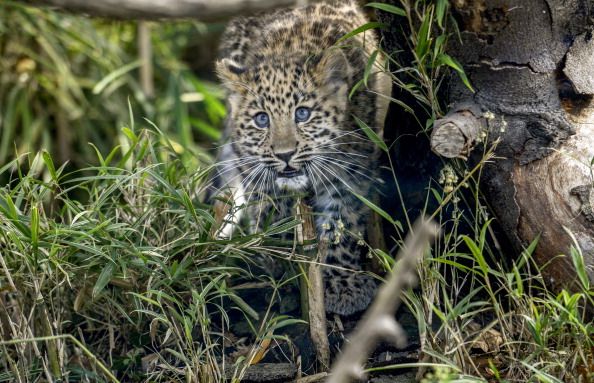
People typically think of leopards as roaming the savannas of Africa but in the Russian Far East, a rare subspecies has adapted to life in the temperate forests. Similar to other leopards, the Amur leopard has fallen victim to poaching, but that is just one of many threats to this highly endangered animal.
Ongoing development and expanding road networks have encroached on their habitats. Scientists have long feared that the Amur leopard, Panthera pardus orientalis, is on a fast track to extinction, but a new population estimate shows their numbers are actually growing, according to research published in June in the scientific journal Conservation Letters.
An international team of scientists set out to measure the population of this animal, tracking the species with information from cameras on both sides of the border of China and Russia. Although their findings show a small number of Amur leopards — just 84 — previous estimates were even less, ranging from 25 to 50 individuals.

The news of the Amur leopard population growth comes nearly two decades after the World Wide Fund for Nature launched a campaign called "Save each of the survivors," to stop poaching and promote continued survival of one of the world's rarest wild cats.
The animals now only live along the southernmost border of Primorskii Province in Russia and Jilin Province of China. This is the only population of wild Amur leopards known of in the world.
They once populated the Korean peninsula as well, but have now completely vanished from that region as their habitats continue to shrink, co-author and country director for the Wildlife Conservation Society's Russia Program, Dale Miquelle, told Newsweek.
The recent establishment of a national park in China to protect Amur leopards is the latest win for wildlife preservationists. The sprawling landscape is now one of the largest big cat sanctuaries in the world. Conservation efforts like this might be the only way that this species can still survive in the wild.
"This island of habitat is the last hope for this animals," Miquelle said.
Russia is also doing its part to protect their big cat population. In 2012, the country established the Leopard National Park that includes about 647,000 acres of land where the animals could live and breed in safety.
"All of this brings greater hope for a brighter future for Amur leopards," said Miquelle.
Uncommon Knowledge
Newsweek is committed to challenging conventional wisdom and finding connections in the search for common ground.
Newsweek is committed to challenging conventional wisdom and finding connections in the search for common ground.
About the writer
Lisa Spear is a science writing fellow at Newsweek. She's previously contributed to a number of other outlets including Time and ... Read more
To read how Newsweek uses AI as a newsroom tool, Click here.








